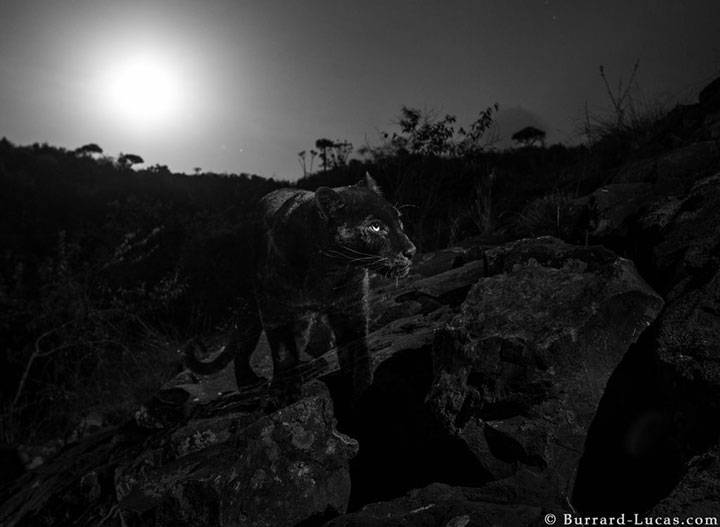
Will Burrard Lucas, a British wildlife photographer, has taken the wildlife jackpot shot and managed to photograph a wild black leopard in Africa, in Laikipia Wilderness Camp in Kenya.
Her took the photo in Kenya, on a camera trap he had set up. Black leopards (as with jaguars, servals, tigers and other cats) are normal leopards which have an extremely rare recessive gene. Given that the gene in question is recessive it is rare that a leopard would have both parents carrying the recessive gene and so ends up black.
In specific parts of the world, black leopards are far less rare – on the Malaysian peninsula as much as half of the leopards are black. However, these leopards live in dark jungles which means there is more dark shadows for the leopards top hide in. This means that there is a higher advantage for black leopards, making them more likely to have many young.
While leopards are active mostly at night, and therefore black leopards can be easier camouflaged, for savannah leopards they need to be able to hide during the day. Although they mostly lie up a tree during the day, a black leopard is more visible.











